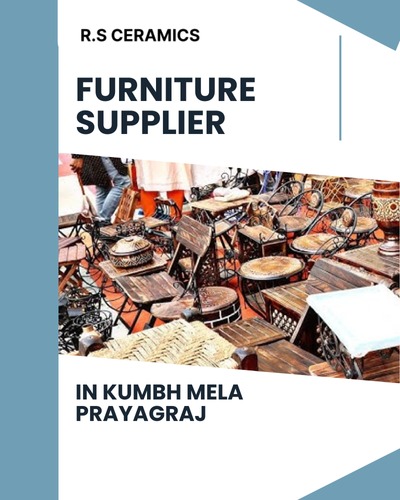It is one of the world’s largest religious fairs, which attracts millions of pilgrims from around the world to take a holy dip in the water during the Toilets things for Kumbh Mela Prayagraj, held every 12 years across India at holy spots. Preparing for humongous dosages of people presents monumental challenges in arranging sanitation and hygiene. It has such an immense implication that toilets have to become a part of the Kumbh Mela on the consideration aspects of logistics and public health, environment, and culture.
Sanitation Importance for: Toilets things for Kumbh Mela Prayagraj
Sanitation importance would be the prime concern of any mass public gathering, but the Toilets things for Kumbh Mela Prayagraj, being one of the biggest events with a certain kind of importance, makes it particularly pertinent here. The site is visited by pilgrims from all corners of the country belonging to different communities. Hygiene has become a general topic of anxiety due to the large crowd in the interest of public health. Poor sanitation facilities spread infection and diseases mainly in crowded areas. Since the risk of water pollution is also there in rivers like Ganges and Yamuna lying close by, safe disposal of wastes and sanitation practices have become the need of the hour.
The Kumbh Mela occupies vast swaths of the riverbank in a temporary settlement, and therefore, the event brings into practice massive, movable sanitation solutions. In addition to the religious dimension, the event engaged the cultural dimension of sanitation: cleanliness of an environment becomes respect to the holy rivers, reflecting the central core of spirituality in Hinduism.
Types of Toilet Facilities Available at the Kumbh Mela
The visitor’s number is so large that different kinds of toilet facilities are arranged:
1. Portable Toilets: Thousands of portable toilets are installed at every nook and corner in the event ground. Such inclusions are also easy and can be shifted within a matter of time. Portable toilets have privacy and are so constructed in such a way that nothing is spread into the environment.
2. Bio-Toilets: The pilgrims in Kumbh Mela are provided with bio-friendly toilets. There, the microbial technology breaks the waste into gas and water. Bio-toilet requires very little cleaning and disposal and hence are sustainable with minimal impact on the environment.
3. Pit toilets are spread across all the divisions of the Toilets things for Kumbh Mela Prayagraj campuses. It is cheaper and a somewhat rudimentary facility for such large congregation crowds. These are just toilet pits covered up with a structure for privacy. Pit toilets can quite come in very handy when considering massive crowds though they should be well managed and maintained immediately so that one does not infect the waters within the surrounding areas.
4. Urinals and Wash Basins: At many places on the premises, some urinals and basins have been kept in a way that their use for hygiene is very convenient and quick. It prevents the congregation of people from awkwardly moving towards a toilet and allows easy dispersion of pathogens.
5. Toilets Disabled Available: Disabled toilets available also comprise toilet facilities, with provision for wheelchair access. All this is done so that all visiting guests may have their needs fulfilled with dignity.
Solid Waste Management and Hygiene Practices
The toilets in Kumbh Mela should always be kept clean. The sanitation teams can enforce this by a strategy as follows: implementing waste management through efficient collection and disposal, use of disinfectants, and supervising the sanitation staff. Generally, wastes are segregated into biodegradable and nonbiodegradable forms to further minimize adverse effects on the environment.
Major hygiene practices include:
- They continuously operate their cleaning teams and apply disinfectants and cleaning agents around toilets so that they continue to remain hygienic.
- Collected waste from the toilet is carried at regular time intervals and taken to disposal sites that are not on the river banks so as not to pollute them.
- The place starts an educational initiative, mainly guiding the visitor toward concerns of hygiene.
- Posters and notices trigger an awareness program by volunteers pointing the right way to the proper use of toilet facilities.
- This is provided near toilets at handwashing water stations, which is important in a high-touch area. However, there are signs reminding one to wash hands before meals or after visits to the toilet.
Innovations in Sanitation Technology with Kumbh Mela
Sanitation at Kumbh Mela is effective due to the role of technology. The following innovations through technology have also improved efficiencies in sanitation:
Smart Toilets: They install smart toilets in certain areas, which regulate and monitor usage habits, cleanliness levels, and waste levels. These will give alerts to the maintenance team for cleaning or maintenance as appropriate.
Application to Places with Amenities: there are sometimes developments of applications to assist the visitors in identifying any toilet facilities or other basic utilities available in the place. The applications make it easy to access while at the same time queueing at certain sanitation points.
– Eco-Sound Biowaste Technologies: Some organizations employ eco-friendly biowaste technologies, whereby they can convert biowaste into biogas or organic fertilizer. They represent the pinnacle of scaling up sustainable systems even beyond the limits of Kumbh Mela.
Sanitation for Millions of People
The task is quite daunting to bring sanitation to millions of people with such micro-level preparatory work
1. Logistical Problems This will require enormous logistics efforts to set up and maintain millions of toilets in one single, inherently dysfunctional city. Coordinating cleaning personnel and supplies and sewage disposal can hardly be overestimated.
2. Trash Management and Water Pollution: Another aspect that would command attention is the prevention of garbage from polluting. These holy water streams: Good management, treatment, and disposal of all wastes without affecting the quality of the water are very crucial but very difficult.
3. Overcrowding: The sanitation facilities would be overwhelmed by the high usage during bathing dates. For such cases, it requires hard labor to adapt to such conditions wherein they can avoid unsanitary conditions amidst long lines of people crowding the facilities.
4. Availability and scarcity of water: Scarcity prevents them from rendering and providing continuous supplies to millions of people. Especially in far-off and temporary premises. Scarcity slows down the functioning of toilets and is sure to lower the hygiene level. Scarcity causes efficient management of water.
5. Behavioural Problems: The education problem itself is another problem. People need to be educated on better sanitation practices. Sometimes, people may not realize that there exist toilets developed elsewhere in the world, and the message campaign has to become very stentorian in those cases.
Conclusion: The Road Ahead for Sanitation at Kumbh Mela
The Toilets things for Kumbh Mela Prayagraj are very effective, thus becoming a boon to the health, safety, and dignity of the pilgrims. To this, efforts go in the direction of smarter monitoring with a bio-toilet, and efficient waste management. Easy access reflects public health and the sustainability of the environment. These innovations are not only helpful in solving problems of huge crowds but also good examples of sanitation. Management of huge events across the world.
Therefore, if India can closely approach the standard of practice regarding sustainability in the case of sanitation during Kumbh Mela. Taking good care of tradition with modern infrastructure will be a great example. Most of the sanitation work here goes even beyond proper dealing with waste; it’s more like respect for nature and cultural heritage. Therefore, sanitation becomes one of the best thought experiences in the spirituality of this world.


